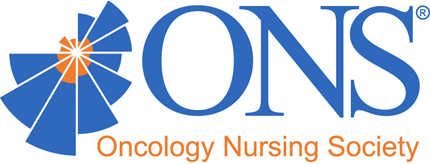Staffing of Ambulatory Treatment Centers
ONS Position Statement: Staffing of Ambulatory Treatment Centers
Appropriate nurse staffing levels contribute to the delivery of safe, quality care and optimal outcomes for patients receiving cancer treatment. The nursing shortage negatively affects staffing in patient care areas with direct impacts on patient outcomes (Haddad et al., 2022). Developing nurse staffing models, particularly in the ambulatory setting, is an ongoing challenge. Oncology Nursing Society (ONS) has developed this position statement through a comprehensive review of the existing literature, as well as engagement with members on the topic of ambulatory staffing via surveys, email inquiries, focus groups, and online discussions in the ONS Communities.
In this position statement, the term “ambulatory setting” includes infusion centers that provide various treatments to patients with cancer, including non-chemotherapy treatment (e.g., IV hydration, transfusions), and radiation therapy. These settings share commonalities, including rapid turnover of patients and the administration of some type of treatment or intervention. “Nurse staffing” refers to the clinical nurses in the setting and does not include advanced practice nurses or nurses in other roles.
Oncology treatment continues to transition to the ambulatory setting, and the care needed for patients is multifaceted. Many inpatient staffing models exist, with federal and state regulations often driving the requirements for nurse staffing levels. No standard staffing model or nurse–patient ratio currently exists for ambulatory infusion, chemotherapy, or radiation therapy treatment centers.
In surveys of ONS members, staffing is frequently cited as a top concern. Determining appropriate nurse staffing can be complex, with patient-, personnel-, treatment-, and institution-based variables affecting decisions. Some centers have developed institution-specific tools or implemented commercial products to address scheduling and staffing. Many of these tools are based on perceived acuity rating of patients and may incorporate other factors, such as nurses’ skillsets/experience or time required for prescribed treatments. However, acuity is not measured only by time spent in the infusion center. The care needs of patients and their support systems are complex and can fluctuate throughout the care spectrum.
Additional definitions of terms related to ambulatory staffing are provided by the American Nurses Association (2017, 2019):
- Appropriate nurse staffing: Scheduling and staffing that match RN expertise with the needs of the recipient of nursing care services in the context of the practice setting and situation
- Scheduling: Allocating a set number and type of staff for an anticipated workload and defined future time period, typically 4–12 weeks; requires translating budget and forecast into a tactical plan for meeting expected patient volumes, service, and care requirements
- Staffing: Day-to-day operations that assess and determine the shift allocation of nursing resources to ensure that adequate personnel are present at each shift and on each unit or department; typically planned within 4–48 hours of the work shift
- Patient classification/acuity: The methods and processes of determining, validating, and monitoring individual patient and family care requirements over time to assist in determining unit staffing, patient assignments, case mix analysis, budget planning and defense, per-patient cost of nursing services, variable billing, and the maintenance of quality assurance standards
It is the position of ONS that:
- RNs are critical to safety and quality of care in ambulatory oncology treatment settings.
- Outcomes are optimized when nurses work at the full scope of practice.
- Nurses in the ambulatory setting, particularly nurse managers, will be educated in the use of data to determine and advocate for staffing that supports quality care in their practice.
- Optimal staffing is locally determined because of the complexity of factors in the ambulatory setting.
- Staffing should not be determined solely by the time a patient spends in the treatment center, because patient acuity is complex and multifaceted.
- Ambulatory settings will consider key variables to assist in the creation of locally determined staffing. Variables to consider include:
- Patient-based: population mix, care needs, translation needs, education needs, social determinants of health
- Treatment-based: treatment regimen, pre-medications, observation period, symptom mitigation interventions
- Personnel-based: nurses’ education, licensure, certification, and level of experience; presence of assistive staff; role delineation; scope of practice; other resources (e.g., volunteers, pharmacists, financial advisors)
- Institution-based: available equipment (e.g., chairs, beds, radiation treatment units), operating hours, services provided, accreditation requirements, physical location (e.g., freestanding center, attached to a hospital, located in a rural setting)
- Professional nursing associations, academic institutions, healthcare organizations, elected officials, and government regulatory agencies will collaborate on initiatives related to safe, adequate, and appropriate nurse staffing in the ambulatory setting.
- Research and dissemination of findings are warranted to develop and validate institution-specific acuity tools and staffing models to improve quality care delivery in complex care environments.
Approved by the ONS Board of Directors, October 2019. October 2022
Download this position statement.
References
American Nurses Association. (2017). Defining staffing: Workforce management, patient classification and acuity systems, the request for proposal process. http://bit.ly/33CPGDz
American Nurses Association. (2019). ANA’s principles for nurse staffing (3rd ed.). American Nurses Association.
Haddad, L.M., Annamaraju, P., & Toney-Butler, T.J. (2022). Nursing shortage. StatPearls Publishing. https://www.ncbi.nlm.nih.gov/books/NBK493175/
ONS Position Statements
ONS stances on the healthcare issues that affect oncology nurses.
View All Position Statements
